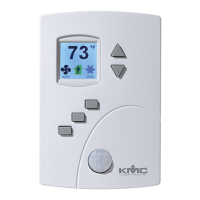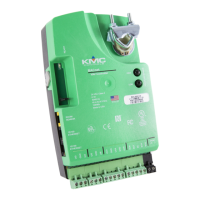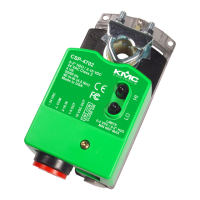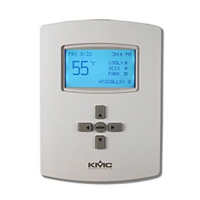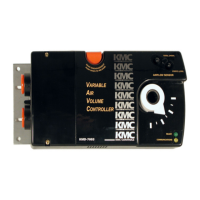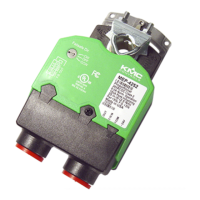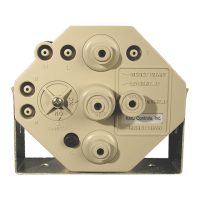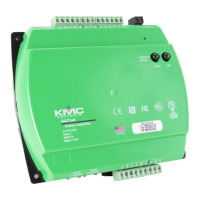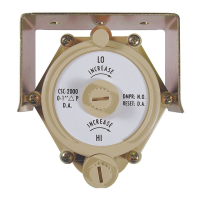Connections and wiring
Use the following principles when connecting a controller to an MS/TP network:
l Connect no more than 128 addressable BACnet devices to one MS/TP network. The
devices can be any mix of controllers or routers.
l For best network performance, limit the MS/TP network size to 32 controllers.
l Use twisted pair, shielded cable with capacitance of no more than 51picofarads per
foot for all network wiring. Belden cable model #82760 meets the cable requirements.
l Connect the -A terminal in parallel with all other - terminals.
l Connect the +B terminal in parallel with all other + terminals.
l Connect the shields of the cable together at each mid line controller. For SimplyVAV
controllers use the S terminal.
l Connect the shield to an earth ground at one end only.
l Use a KMD–5575 repeater if the cable length will exceed 4000 feet (1220 meters). Use
no more than four repeaters per MS/TP network.
l Place a KMD–5567 surge suppressor in the cable where it exits a building.
End of line termination switches
The controllers on the physical ends of the EIA-485 wiring segment must have end of line
termination added for proper network operation.
l For controllers at the end of the network set the EOL switches to On
l For mid line controllers at the end of the network set the EOL switches to Off
Network bulbs
SimplyVAVcontrollers include network bulbs located near the MS/TP network connector.
These bulbs serve three functions:
l Removing both bulbs will disconnect the controller from the MS/TP network.
l If one or both bulbs are lit, it indicates the network connection or controller power is not
properly wired.
l If the voltage or current on the network exceeds safe levels, the bulbs may open and
protect the controller from damage.
Bulbs are illuminated If one or both bulbs are illuminated, it indicates the network is not
phased correctly. The ground potential of the controller is not the same as other controllers
on the network. The brighter the isolation bulbs on a controller are illuminated, the closer that
controller is to the source of the problem. Remove power and check the network and power
connections.
Section 8: System integration and networking KMC Controls, Inc.
64 Revision H

